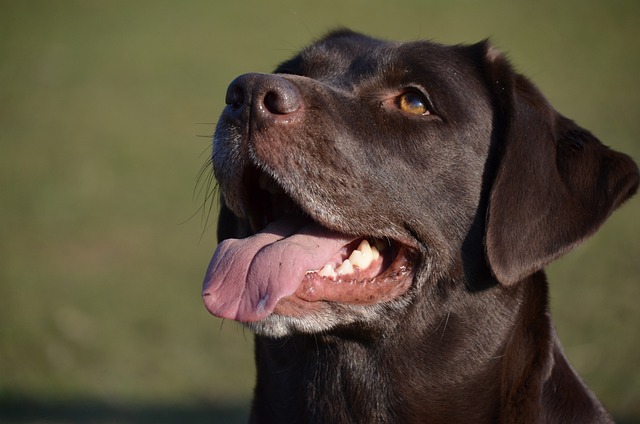
How to get rid of dandruff in dogs naturally?
Dandruff in dogs often shows up as those tiny white flakes clinging to their fur,but it's more than just a cosmetic issue—it can signal dry skin,irritation,or even underlying health concerns.
When it comes to our beloved canine companions, nail care often gets pushed to the back burner of our pet care routines. Yet, the question of how long a dog can go without cutting nails is more critical than many pet owners realize. The reality is that proper dog nail trimming frequency isn't just about aesthetics – it's fundamentally about your dog's health, comfort, and quality of life.
I've seen countless dogs in my years of practice where well-meaning owners believed their pets' nails would naturally wear down from walks and play. While outdoor activity does help somewhat, it rarely provides enough natural wear to maintain optimal nail length. Most dogs require professional or at-home nail trimming every 3-6 weeks, though this timeline varies significantly based on individual factors.
The misconception that dogs can indefinitely go without nail care stems from observing wild canines. However, our domesticated friends live vastly different lives. Wild dogs traverse rough terrain for miles daily, naturally grinding down their nails on rocks and hard surfaces. Our house pets, even the most active ones, simply don't encounter the same level of natural nail wear.
So, how long can a dog go without nail trimming? The answer isn't straightforward. Generally speaking, most dogs can safely go 4-8 weeks between nail trims, but this varies dramatically. Small breeds with faster metabolisms often experience quicker nail growth, requiring attention every 3-4 weeks. Larger, more active dogs might stretch to 6-8 weeks, especially if they spend considerable time on concrete or asphalt.
Puppies present their own timeline challenges. Their nails grow remarkably fast – sometimes requiring weekly attention during rapid growth phases. Senior dogs, on the other hand, may need more frequent care as their activity levels decrease and natural wear diminishes. I've noticed that older dogs also tend to have thicker, more brittle nails that require careful, regular maintenance.
The breed factor cannot be overlooked when considering dog nail trimming frequency. Breeds like Greyhounds and Whippets, built for speed on softer surfaces, often need more frequent trimming than working breeds historically accustomed to rough terrain. Additionally, dogs with dewclaws – those thumb-like appendages higher on the leg – require special attention since these nails never touch the ground and receive zero natural wear.
When we examine the effects of neglecting dog nail care, the consequences extend far beyond cosmetic concerns. Overgrown nails create a cascade of health issues that many owners don't immediately connect to nail length. The most immediate problem involves the nail's quick – the pink, blood-rich tissue inside the nail. As nails grow longer, the quick extends further out, making future trimming more difficult and painful.
Long nails force dogs to alter their natural gait, creating uneven pressure distribution across their paws and up through their legs. This compensation leads to joint stress, particularly in the shoulders, hips, and spine. Over time, this altered biomechanics can contribute to arthritis and other musculoskeletal problems. I've treated senior dogs whose mobility issues were significantly improved simply by addressing years of nail neglect.
Ingrown nails represent another serious concern when discussing dog nail health problems from long nails. When nails curve back into the paw pads, they create painful wounds prone to infection. These injuries are particularly common with dewclaws, which naturally curl as they grow. The resulting infections can be stubborn and require antibiotic treatment, not to mention the discomfort they cause our pets.
The splitting and breaking of overgrown nails creates additional health risks. Long nails are more likely to catch on carpets, furniture, or outdoor debris, leading to painful tears that often extend into the quick. These injuries can be quite dramatic, producing significant bleeding and requiring immediate veterinary attention.
Perhaps most concerning are the behavioral changes due to long dog nails that many owners dismiss as simple aging or personality shifts. Dogs with overgrown nails often develop an altered walking pattern, taking shorter steps and distributing weight differently to minimize discomfort. This change isn't always obvious, but observant owners might notice their dog becoming less enthusiastic about walks or preferring softer surfaces.
The clicking sound of long nails on hard floors can actually contribute to anxiety in some dogs. This constant noise can become a source of stress, particularly for already anxious animals. I've observed dogs become more reluctant to move around their homes when their nails create excessive clicking, leading to decreased activity levels and potential weight gain.
Behavioral changes also manifest in altered sleeping positions and reluctance to engage in previously enjoyed activities. Dogs might avoid jumping onto furniture or becoming less playful during interactive sessions. These shifts are often gradual, making them easy to overlook until the nail problem becomes severe.
From a veterinary perspective, maintaining proper nail length is non-negotiable for optimal canine health. The American Veterinary Medical Association emphasizes that nail care should be part of routine pet maintenance, similar to dental care and regular grooming. Veterinarians recommend that nails should be short enough that they don't touch the ground when the dog is standing on a flat surface.
Professional groomers and veterinary technicians often serve as the first line of defense in identifying nail-related problems. They're trained to recognize early signs of issues, including changes in nail color, thickness, or growth patterns that might indicate underlying health conditions. Some systemic diseases can actually affect nail growth rates and quality.
The key indicator that many professionals watch for is the natural curve of the nail. When nails begin to curl significantly, it's a clear sign that trimming is overdue. Additionally, if you can hear your dog's nails clicking on hard surfaces during normal walking, they're likely too long and require immediate attention.
Veterinary experts also stress the importance of gradual nail shortening for dogs with severely overgrown nails. Attempting to cut extremely long nails back to proper length in one session often results in cutting the quick, causing pain and bleeding that can create lasting anxiety around nail care. Instead, professionals recommend taking small amounts off regularly, allowing the quick to recede gradually over several trimming sessions.
Creating a positive nail care routine requires patience, proper tools, and often, professional guidance. The most effective approach involves starting nail care early in a dog's life, making it a routine part of their care regimen. However, even older dogs can learn to tolerate nail trimming with the right approach.
High-quality nail clippers designed specifically for your dog's size are essential. Guillotine-style clippers work well for smaller dogs, while scissor-type clippers are often preferred for larger breeds. Some owners find grinder tools less stressful for their pets, as they allow for more gradual nail shortening, though they do require acclimation to the noise and vibration.
The trimming technique itself is crucial for success. The goal is to cut just the white tip of the nail, staying well clear of the pink quick. In dogs with dark nails where the quick isn't visible, taking very small amounts and watching for a small dark circle in the center of the cut nail can help identify when you're approaching the quick.
Making nail trimming a positive experience involves counter-conditioning and desensitization techniques. Start by simply handling your dog's paws regularly, offering treats and praise for calm behavior. Gradually introduce the clippers, allowing your dog to see and smell them before ever attempting to cut a nail. Many successful nail care routines begin with trimming just one or two nails per session, building tolerance over time.
For dogs with extreme nail anxiety, professional help shouldn't be delayed. Veterinary behaviorists can provide guidance on desensitization protocols, and some dogs benefit from anti-anxiety medications during nail care sessions. The investment in professional training or behavioral modification is often worthwhile when considering the lifelong need for regular nail maintenance.
Regular nail care ultimately contributes to your dog's overall well-being in ways that extend far beyond the immediate benefits. Dogs with properly maintained nails move more confidently, experience less joint stress, and maintain better posture throughout their lives. The investment in consistent nail care pays dividends in your pet's comfort, health, and happiness for years to come.

Dandruff in dogs often shows up as those tiny white flakes clinging to their fur,but it's more than just a cosmetic issue—it can signal dry skin,irritation,or even underlying health concerns.

If you’ve ever watched your dog turn away from their food, then spend the next hour pacing and whimpering, you know the panic of an upset stomach.

If you’ve ever cleaned up diarrhea or watched your dog vomit after meals, only to feel helpless as they refuse their next bowl of food, you know the stress of a sensitive stomach.

If you’ve ever stared at the ingredient list on your dog’s kibble, wondering what “meat by-products” really are, you’re not alone. New dog owners

If you’ve ever noticed your dog suddenly shaking their head like a wet towel, or pawing at their ear until it’s red and sore, you might’ve wondered if they’re just being “naughty.”

Finding worms in your dog’s stool or noticing them scooting uncomfortably across the floor is enough to make any pet owner’s heart sink.